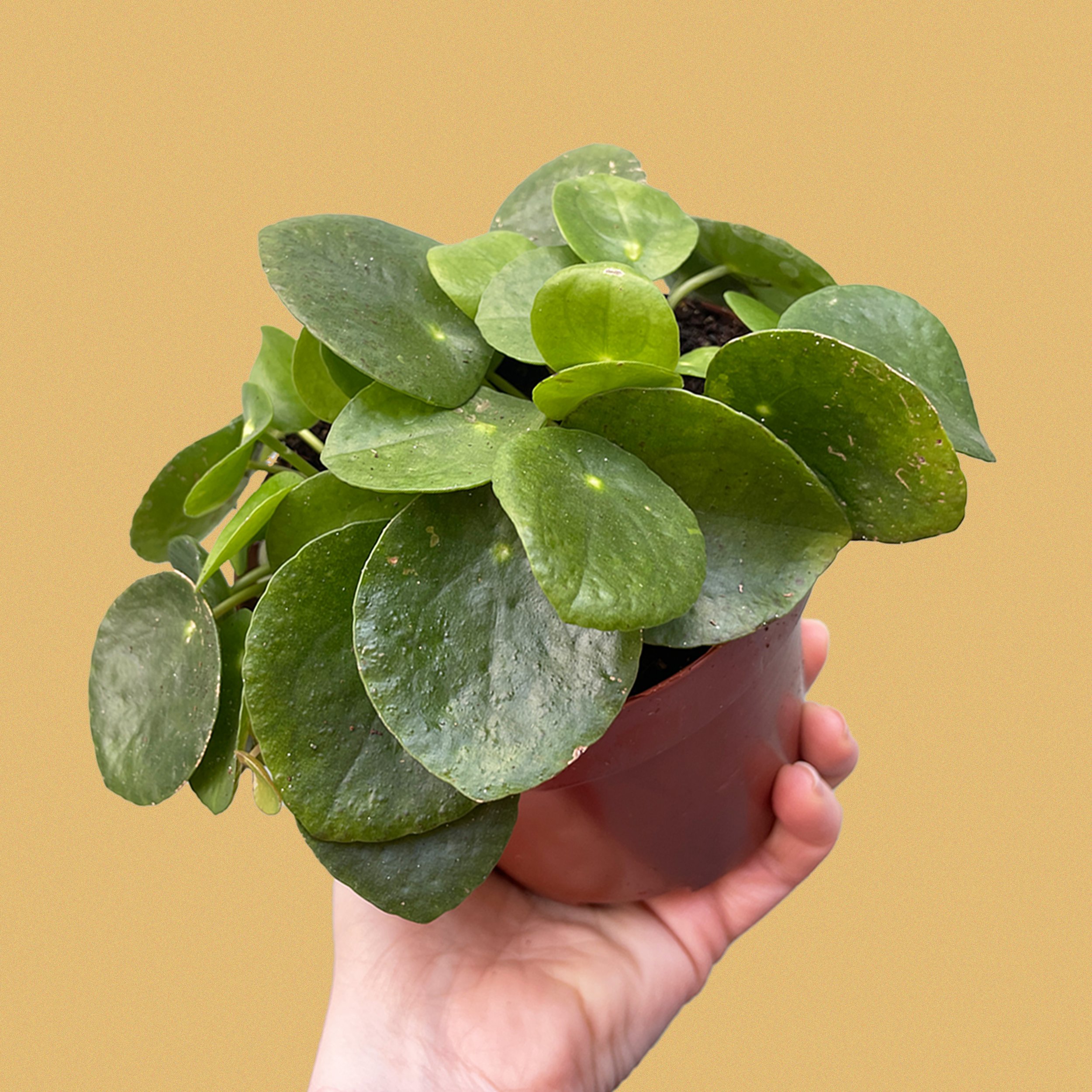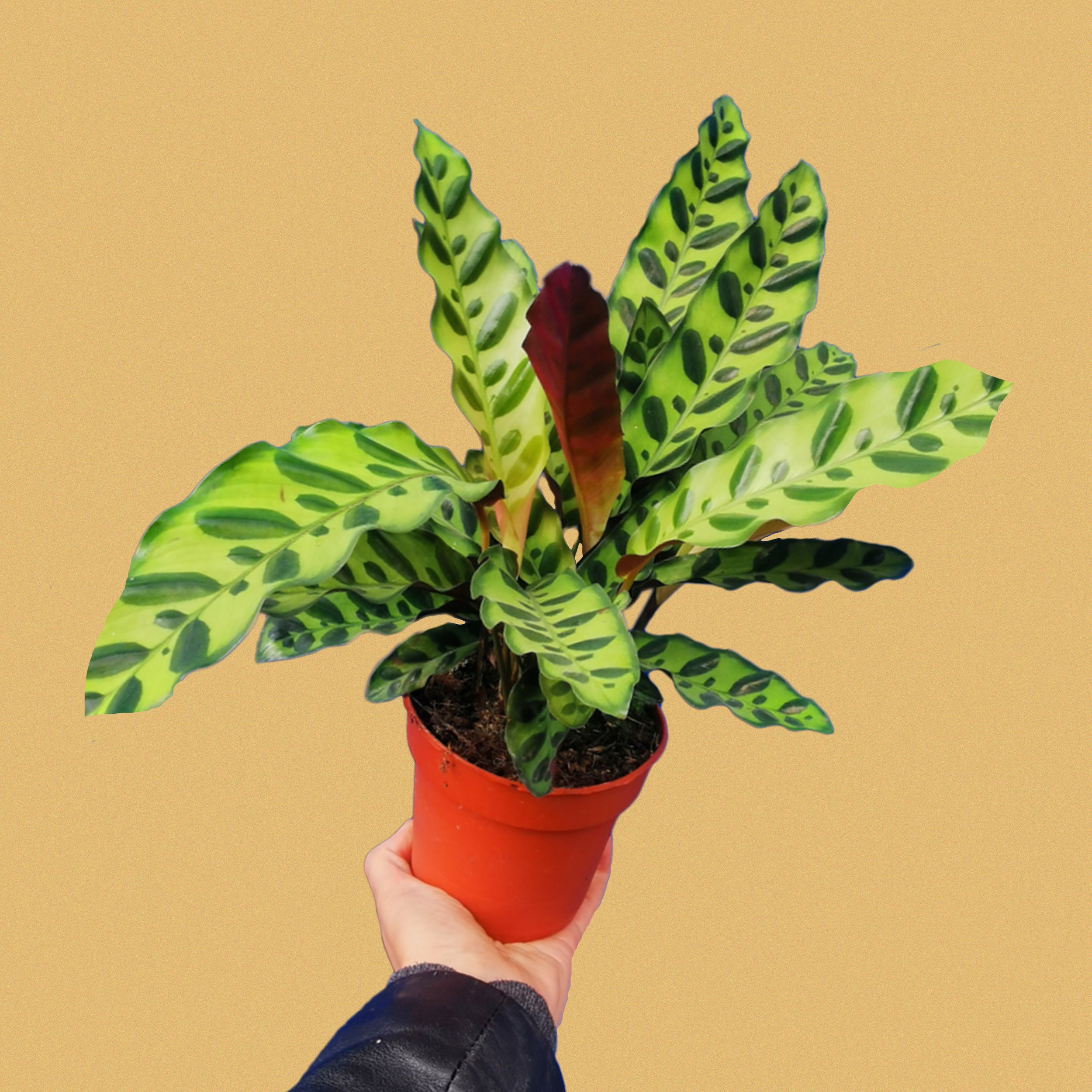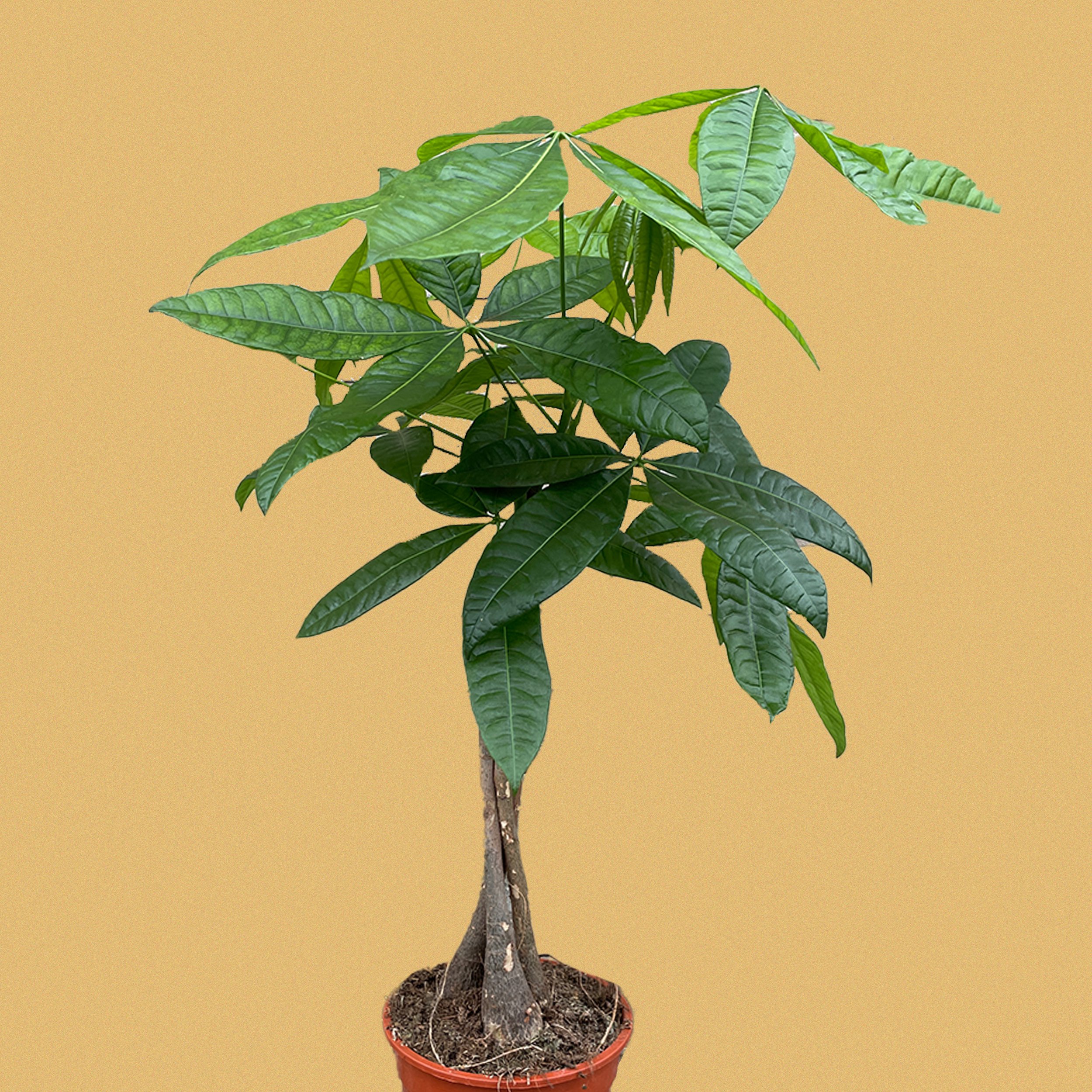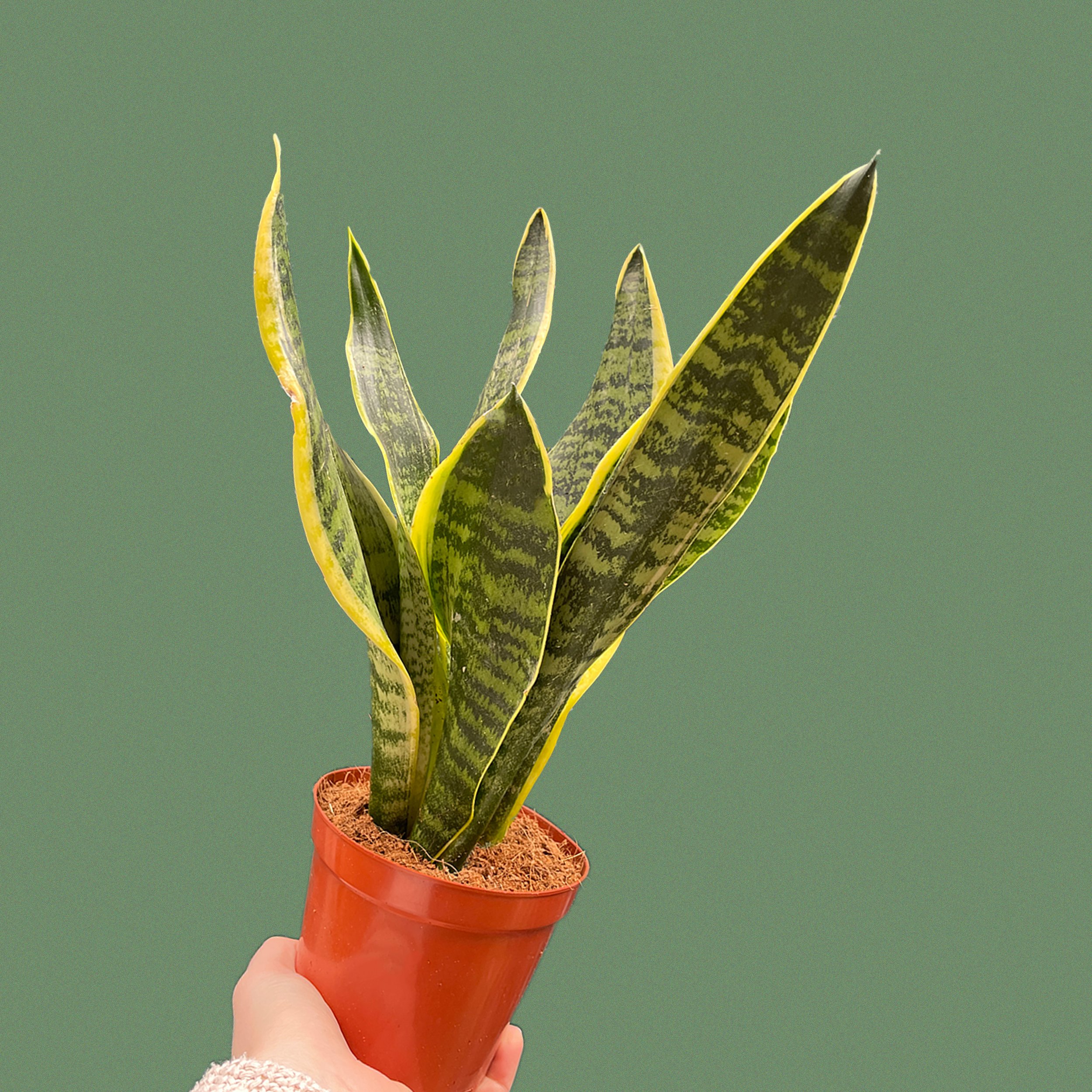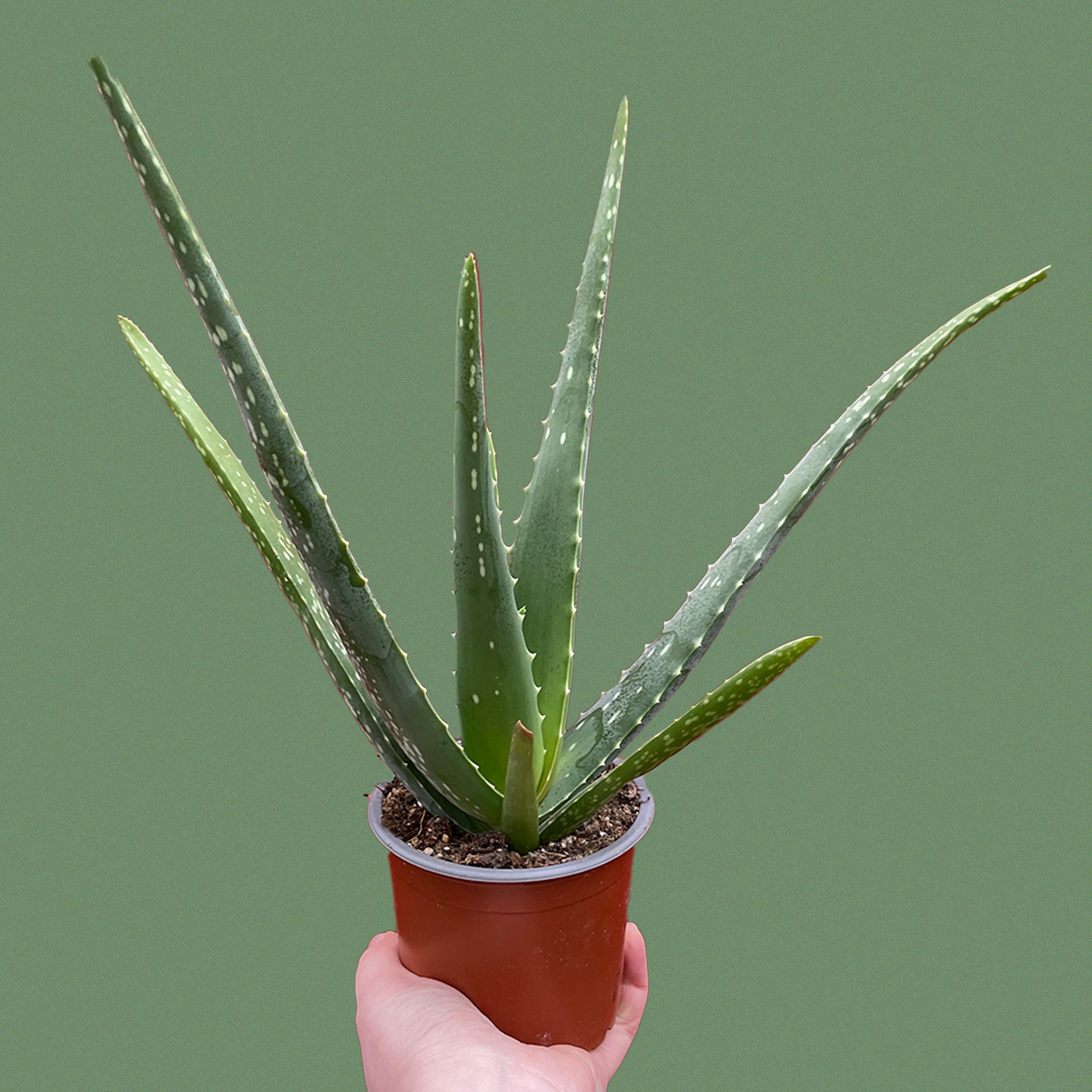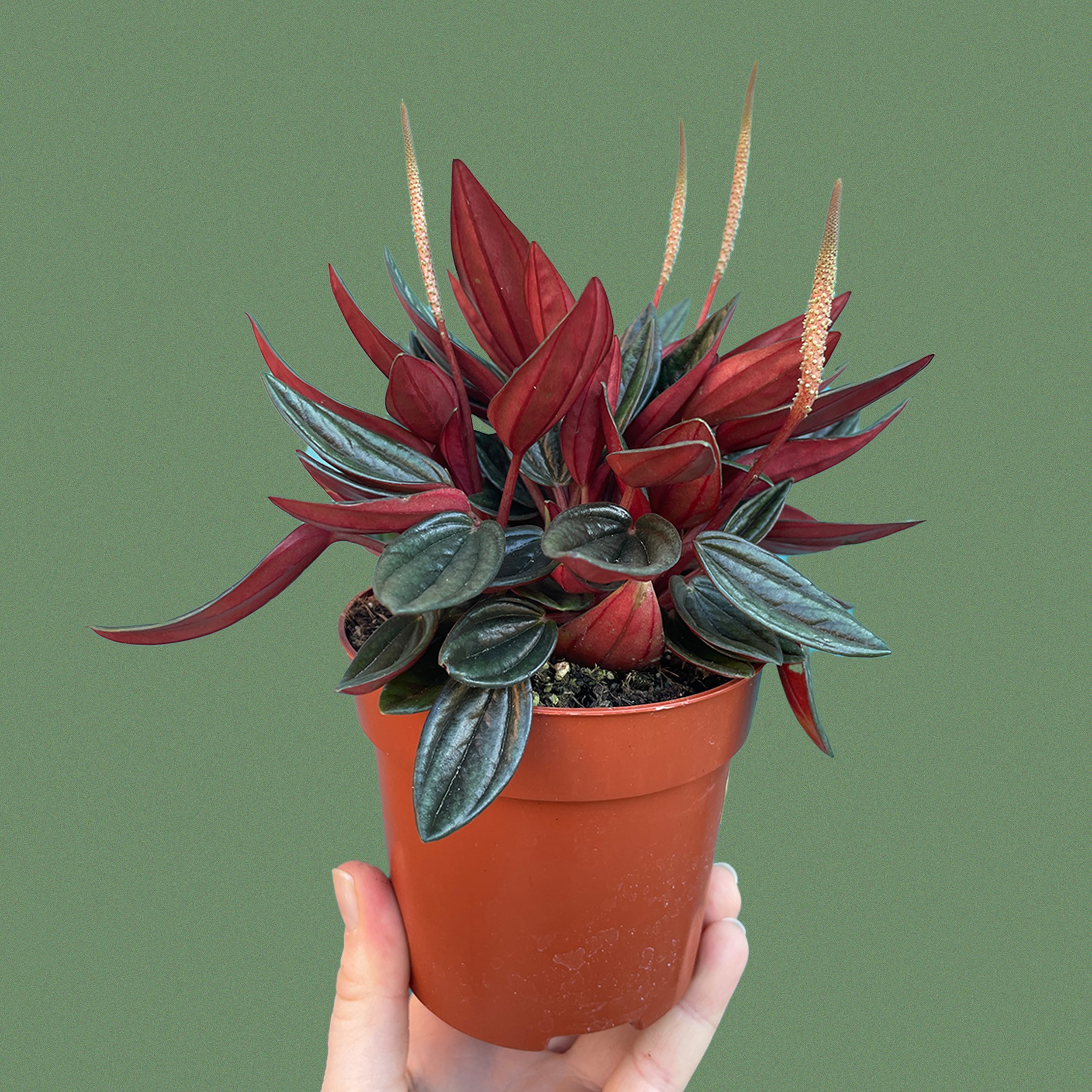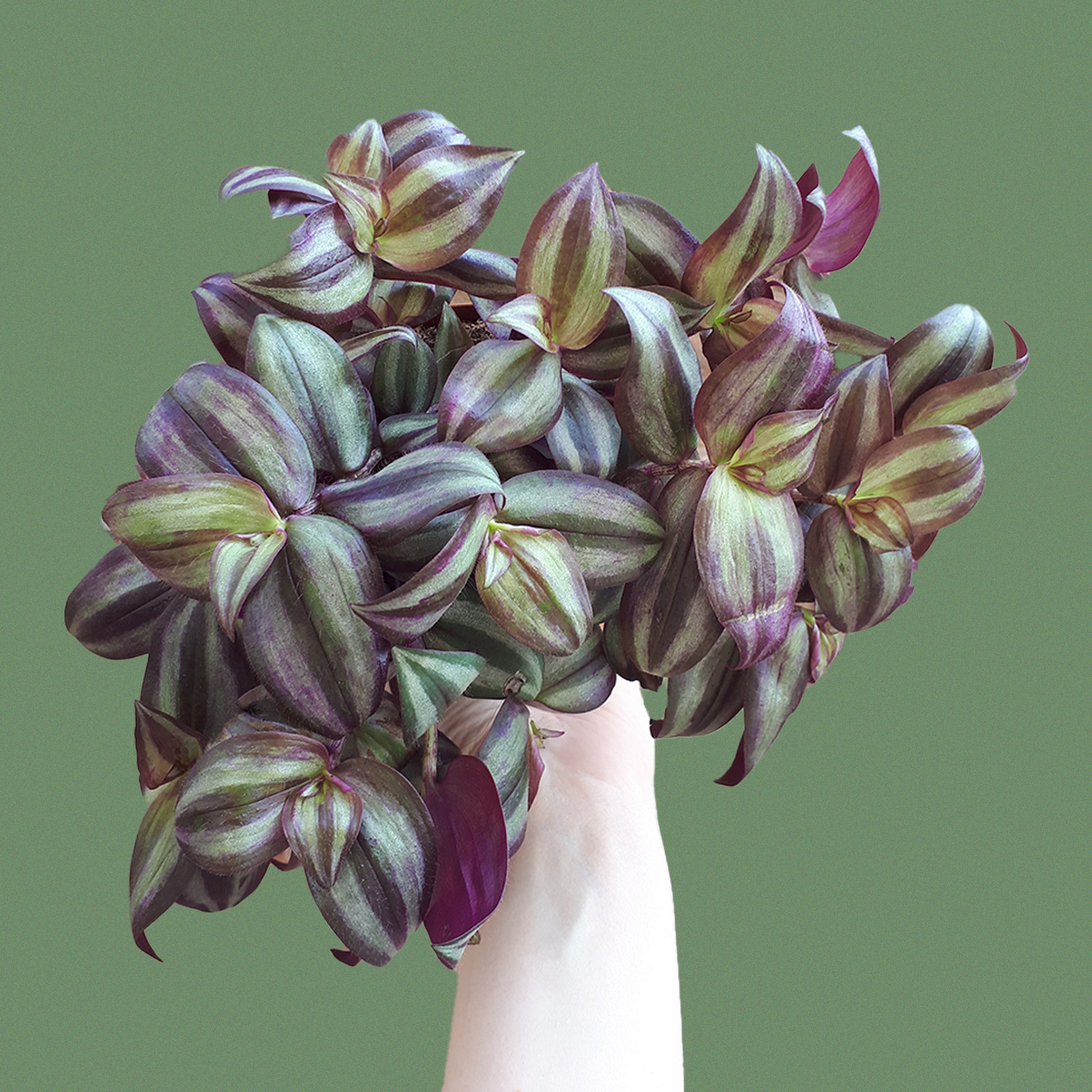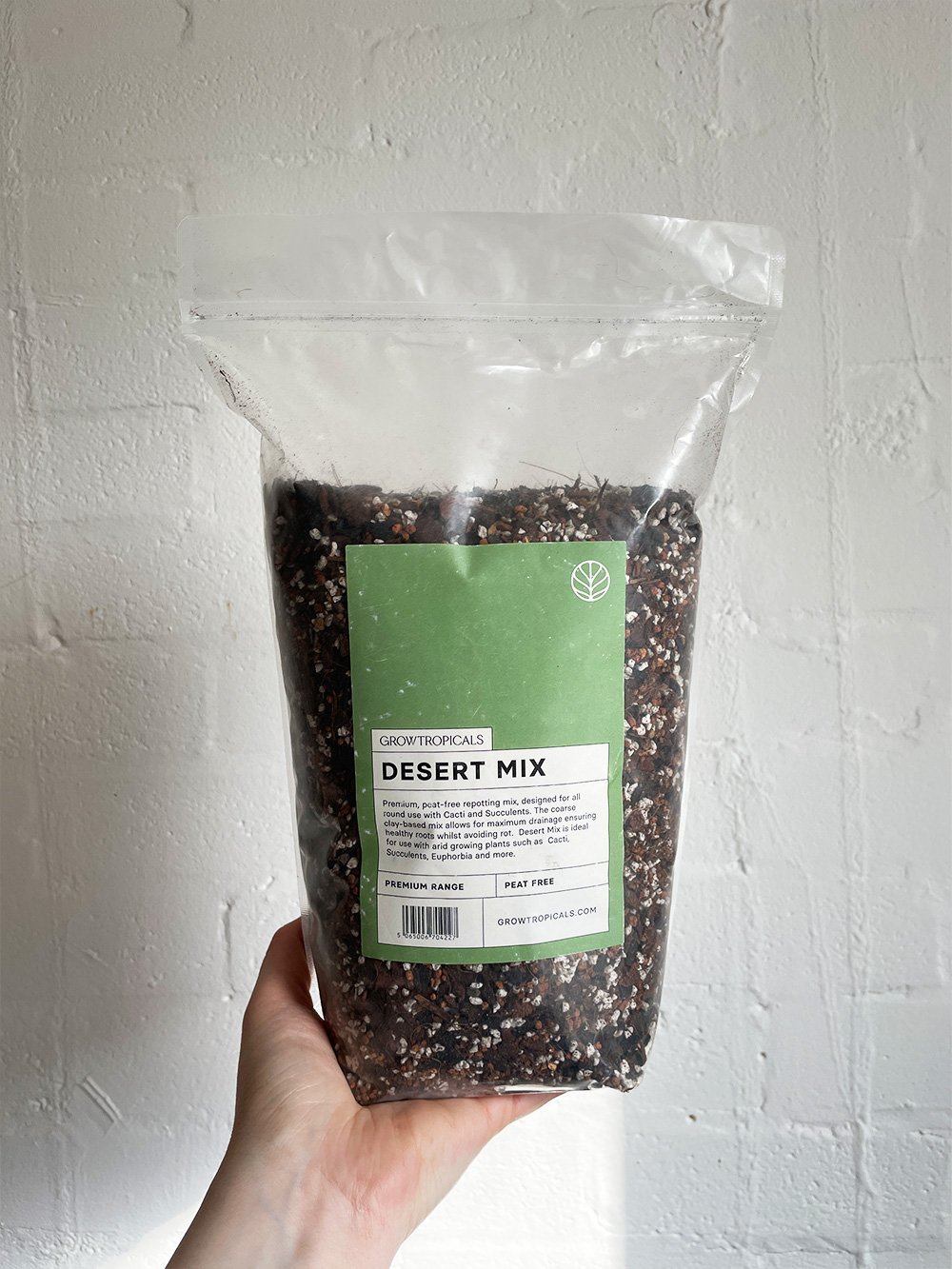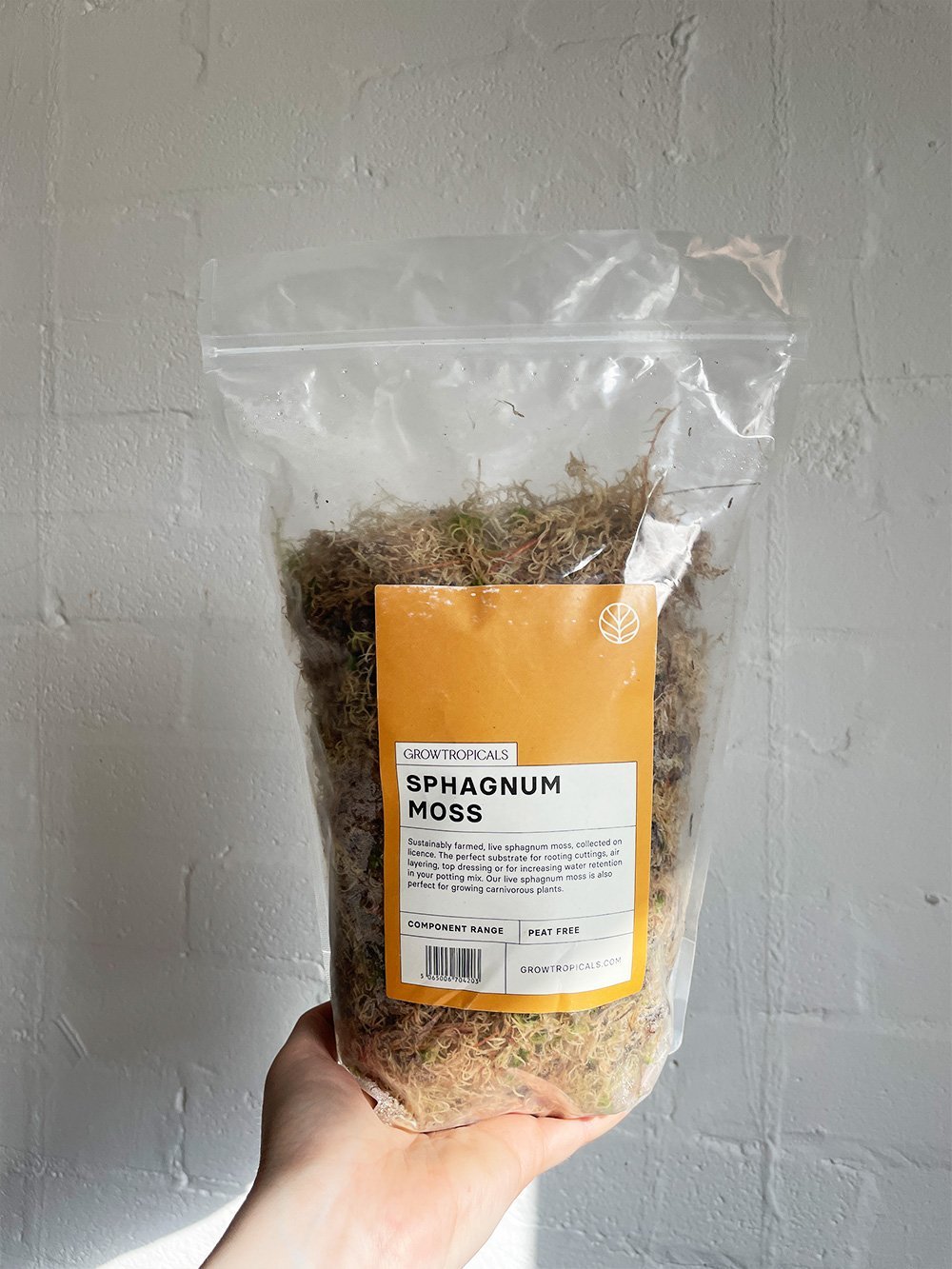Plants for Pets: Non-Toxic Plants + Terrarium Tips
It can be tricky to be a pet and plant owner when you find out many common houseplants are unsafe for our furry friends to ingest. Many are also toxic to humans, so it’s important to be mindful around small children. Common houseplants such as Figs, Philodendron, Peace Lilies, and Pothos have sap within their leaves. When their leaves are bitten or snapped, this sap can cause irritation to the skin and mouth, and if swallowed, can cause upsets stomachs. Thankfully, fatal symptoms are usually only experienced when large quantities are ingested, but it is still a risk. If you have recently found out that one or more of your houseplants are toxic, we recommend moving them to rooms that are often shut off or display them on high shelves and out of reach areas. However, knowing how much pets like to explore, we know this might not be possible.
Luckily for pet owners, there are plenty of pet-safe, non-toxic plant options for a green space and a peaceful mind! We have put together some of our favourite pet-friendly houseplants, as well as some tips on reptile enclosure/terrarium care. At Plant Shop, we research all our new stock to check if they are toxic. You can explore our Pet Friendly category on our website, where we highlight all the plants we currently have in stock that are safe for cats & dogs.
Safe for Cats and Dogs
Pilea Peperomioides
Native to the foothills of the Himalayas in the South of China, the Pilea is also known as the Chinese Money Plant. It is a fast-growing plant that makes a playful addition to any plant collection, with lovely round, fleshy leaves. In fact, it is believed to bring good luck and fortune, and the large, circular leaves resemble coins - giving it its name. Speaking of luck - the Pilea is completely pet-friendly and safe for your pets to bump into and nibble!
Care: Pilea love a spot with bright, indirect light. They also enjoy a bit of dappled direct sun, so an East facing windowsill is ideal for growth! Despite being a succulent, Pilea like consistent waterings - take curling leaves and dry top soil as a sign to water deeply. This hardy succulent is easy to care for and creates a unique shape as its centre stem grows taller.
Calathea & Maranta
Closely related to each other, the Calathea and Maranta family are fantastic statement pieces due to their striking foliage, air-purifying qualities, and are non-toxic! There are many varieties of Calathea, Ctenanthe, and Maranta, all displaying beautifully colourful leaves with eye-catching patterns. Nicknamed ‘Prayer Plants’, their leaves move and bow in response to the light throughout the day, making them incredibly fascinating to watch as centre-pieces.
Care: Calathea are great for north-facing rooms or other spaces that receive low-light. The dislike direct sunlight, so a shady spot is ideal! Water your Calathea when the top layer of soil has dried as fully dry soil will result in crispy edges on the leaves. Native to American rainforests, Calathea do great in higher humidity environments such as bathrooms and kitchens where the steam creates natural humidity.
Pachira Aquatica
Also known as the 'Japanese Money Tree', the Pachira Aquatica is believed to bring good luck and prosperity, and is often utilised by masters of Feng Shui to create positive energy, or ‘chi'.’ They have multiple trunks and a crest of bushy, green leaves, making a wonderful addition to any living room. Larger Pachira often have their trunks braided to create a wonderfully ornate look, and their upright growth makes them perfect for tight spaces and homes with pets! The Pachira non-toxic and as an added bonus, because their leaves grow on top of the plant, your pets are less likely to be able to reach and damage the beautiful folliage.
Care: Bright but indirect light is ideal for Pachira, avoiding direct sunlight that can burn the leaves. Only water once every 2 weeks, when the top few inches of soil have dried. Hardy of a little neglect, they are great for busy pet parents and beginner plant parents!
Aeonium Arboreum
This stunning succulent is not only pet-safe but also tough! Native to North Africa and the Canary Islands, they make fantastic statement pieces in sunny windowsills! With dense flower-shaped clusters of fleshy, smooth leaves, varieties such as the 'Velour’ have a dark purple colourway. These colourful, darker varieties would stand as a great contrast to regularly leafy, green houseplants.
Care: Aeonium grow best in bright environments, essential for succulents to flourish. It prefers to get a good few hours of direct sun per day, although it will tolerate, but show slower growth, in bright indirect light. They are also well suited to conservatories and greenhouses, and can be kept outdoors in the warmer months.
Chlorophytum Comosum
The Spider Plant, or Chlorophytum Comosum, is a houseplant staple! It earns its name from its long and spindly light green leaves, and it is known to be one of the easiest houseplants to propagate because of how often they produce ‘pups’. They can be found in solid green or variegated varieties which have a retro appearance and striped leaves. They are pet-friendly and won’t upset any tummies if eaten, however, they have been found to have hallucinogenic properties that can effect cats!
Care: Spider Plants can tolerate low-light conditions, though they grow quicker in bright, indirect light. They like to dry out a little between waterings, so check the soil is at least half way dry before watering again- perfect for forgetful plant parents. They also like humid spaces like bathrooms, but are hardy in regular humidity too.
Nephrolepis Cordifolia
The Boston Fern, also known as the ‘Sword Fern’, is a true classic. It has wonderful, dense clusters of fronds, with a glossy, elongated, and fluffy appearance. It also boasts air-purifying qualities, making it a great choice for any household! It is pretty tolerant of low light, so it’s great for bringing some lush greenery to a shady corner! Boston Fern’s are completely pet-safe and great to display in high-traffic areas like dining tables or shady shelves. Other ‘true’ ferns like the Lemon Button Fern and Maidenhair Fern are also pet-friendly. However, watch out for plants like the Asparagus Fern which, despite their name, are not ‘true’ ferns and are actually toxic!
Care: Ferns enjoy high humidity, so regular misting is recommended to keep them looking their best. Alternatively, keep in the bathroom to add a lovely green vibe, while keeping this beauty moist! Ferns also thrive in closed terrariums or damp reptile enclosures for pets that like high humidity - such as frogs and some lizards. Water approximately weekly, when the top soil has dried, and keep away from direct sunlight.
Explore even more plants in our Pet Friendly category below - this includes all non-toxic plants that are safe for cats & dogs.
Plants for Reptiles
We have recently discovered that some ‘toxic’ plants are actually safe for reptiles! Some of these plants won’t be in our Pet Friendly category because they are not safe for cats & dogs, but we have put together some recommendations below for reptile-safe plants that can make enclosures and terrariums enriching and beautiful. From turtles to lizards to frogs, each reptile is different and some may nibble on foliage in their enclosures. Because of this, it’s super important to check these plants are safe. The following tips are based on our research of reptiles generally, but please conduct your own research depending on your particular pet and their requirements to ensure a safe and healthy environment for your reptile!
Safe for Reptiles
Sansevieria
Widely known for being toxic for cats and dogs, Sansevieria have been found to be safe for many reptiles and, because they grow vertically, are highly recommended for reptiles that like to climb. Sansevieria like dry soil and bright light so they are ideal for dry enclosures for reptiles like snakes, or desert-style terrariums. Ironically, they are nicknamed ‘Snake Plants’ because of their scale like pattern and shape that resembles a snake!
Aloe Vera
Popular for their soothing and healing properties for humans, Aloe are actually un-safe for cats and dogs to eat because of a chemical called saponin. Despite this, Aloe is actually safe for some reptiles to eat. Turtles can be fed Aloe Vera in moderation, but too much can have laxative effects! They like dry environments just like Sansevieria, so they are great for arid terrariums and enclosures. Because they are safe in moderation, we recommend only keeping this plant in enclosures of less curious reptiles, or outside of the enclosure to be given to them on occasion.
Tradescantia
This adorable trailing plant is known as commonly called Tradescantia Zebrina, ‘Spiderwort’, or ‘Inch Plant’. It has lovely striped and shiny foliage which grow elegantly along long stems, beginning to trail when more mature. Typically in shades of purple or green, these babies are fast growers - so good care will be rewarded with lush foliage! Unfortunately, they are mildly toxic to cats and dogs, but are safe to put in frog and gecko enclosures. Tradescantia love high humidity in their environment, so closed terrariums and damp enclosures are perfect! They also like bright, indirect light - so enclosures near light sources or with grow lights are ideal.
Peperomia Rosso
This Peperomia is non-toxic, not only for reptiles, but for cats and dogs as well! This gorgeous succulent has oval, pointed-shaped foliage which grows outwards in a star shape cluster. They also produce lovely tuber-esque flowers when happy! Perfect for displaying in sunny windows or well-lit spaces, Peperomia also like high humidity and thrive well in damp conditions. This makes them perfect for frog or lizard enclosures that have humidifiers or closed terrariums. Their dark leaves and red accents make them a lovely addition to green spaces and displays.
Fittonia
Another lovely plant that, just like the Peperomia, is safe for cats, dogs, and reptiles! Fittonia are known as a ‘Nerve plant’ due to the prominent veins on their leaves. You can find these beauties in a range of colours from green to pink. This rainforest native loves damp the conditions found in closed terrariums and reptile enclosures. If you’d like to keep Fittonia as a houseplant, we recommend placing them in a bathroom or by a humidifier to help them thrive!
Terrarium Tips
Want to create a terrarium for your plants or as an enclosure for your reptile? We have some tips below, as well as available resources online & in-store.
Picking the Right Terrarium
There are typically two kinds of terrarium that you can make - closed & open. Any kind of glass container can be used, granted it receives enough light and has enough room for the plants to grow and breath. Closed terrariums are great for plants that enjoy high humidity, like Fittonia, Ferns, and Palms. Because the container is closed, typically with a cork or capped lid, the terrarium creates it’s own eco-system meaning they infrequently need to be watered! Explore our High Humidity category to find some plants that might enjoy being in a terrarium. Open terrariums usually don’t have a lid, or are simply designed in bowls. Because of this air-flow, closed terrariums are great for plants that like dry conditions like cacti and succulents. You can browse our Drought Tolerant category for some suggestions! If you’re looking to make an enclosure, please check that each plant is safe for your reptile. Despite these open/closed terrarium ‘rules’, many humidity loving plants like open terrariums as the glass sides can increase the humidity enough. It all depends on which potting mix you use for whether your plants will thrive or fail.
Potting Mixes
Humidity loving plants tend to like to stay in moist soil, similar to their tropical origins, and certain soils are better at retaining this moisture. Regular Houseplant Mix, Coco Coir, and Sphagnum Moss are great substrates for closed terrariums as they are denser and hold onto moisture longer. This means your plants are less likely to dry out quickly. Pre-mixed terrarium substrates are also very common, usually providing you with everything you need for your terrarium’s base.
For desert plants like cacti and succulents, more ‘airy’ substrates are ideal. Cactus Mix or Desert Mix are usually created using houseplant soil mixed with rocks, Coarse Perlite and Orchid Bark. These chunky pieces promote air flow in the soil and allows it to dry out a lot quicker. For open, desert terrariums - dry mixes are a must!
When repotting regular houseplants, we actually recommend adding Orchid Bark and Coarse Perlite to your potting mix to help your houseplant thrive, no matter their type! All plants need oxygen, and the most common way houseplants die is from overwatering. Having airy soil lets your plants dry out quicker so you are less likely to overwater and drown your plant.
Watering and Misting
Most terrariums won’t have drainage holes, so it is important you don’t add to much water to them that can’t evaporate or flow out. Soggy soil that can’t dry will lead to root rot and very poorly plants! For closed terrariums, we recommend keeping an eye out for condensation. Some condensation is a good sign your terrarium is nice and humid, but too much moisture might lead to rot - to prevent this you can take the lid off for an hour or two to let the moisture escape. On the other hand, you may find your closed terrarium to be too dry, especially if kept in bright and warm spaces. In this case you can mist inside the terrarium to add some humidity to the vessel. For open, desert terrariums - they rarely need water, and a couple teaspoons of water once every month or two should do the trick! For regular potted plants, however, we find that giving your plant spoonful’s or drops of water isn’t effective. When plants are potted in pots with drainage holes, you should give them a deep drink all over the top soil until water starts to drip from the bottom - even for cacti and succulents! A good sign your succulents are thirsty is when their bottom leaves, which are thick from storing water, go slightly soft.
We hope our recommendations help you create a safe and beautiful space for you and your furry friends 🐾
Words and Illustrations by Phoebe Ingram.


